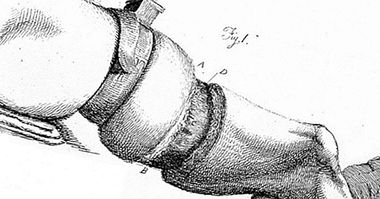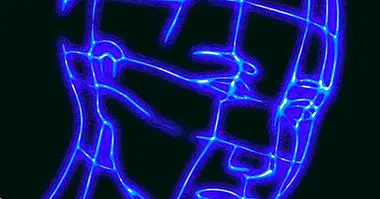Dissociative leak: symptoms, types, causes and treatment
We woke up in a place that is not known to us. We roam the streets, but we are not in our house, not even in our city. Where am I and what am I doing here? We asked a local, who seems to recognize us and calls us by a name that is not ours. Apparently we have been in the town for a month. How is this possible?
One of the possible answers to this question is that we have experienced a disorder called dissociative leak .
- Maybe you're interested: "" Multiple "(Split), a film about Dissociative Identity Disorder"
Dissociative leak: characteristic definition and symptoms
The dissociative leak is defined as an associative disorder characterized by the performance of Unexpected trips away from the usual environment of the subject in which the individual is unable to remember his past. This trip is carried out with apparent normality, not calling attention to the behavior of the subject and without the appearance of symptoms of a mental disorder or cognitive alterations. It is also frequent, although it may not happen, that the individual has doubts about his own identity, either losing it or assuming a new one.
In a great majority of cases the person it has just recovered its previous identity and its memory . However, there are cases in which parts of the past are not remembered and even on occasion it has occurred that the patient has not come to remember his past prior to the flight. In the majority of cases, on retrieving the identity, amnesia may occur after the episode in which what happened during the episode is forgotten.
After recovering the memory the individual usually feels discomfort , derived both from the confusion of what happened and the deterioration in different vital domains such as work or couple. You may experience guilt, depression, anxiety, irritability, impulsivity, and even suicide attempts may occur.
At present, the dissociative fugue is no longer considered a disorder by itself, being a specifier of dissociative or psychogenic amnesia because, with the exception of the presence of the leak in question, it shares most of its characteristics.
- Related article: "The different types of amnesia (and its characteristics)"
Subtypes of leakage
While most of the symptoms of the dissociative leak are similar , this disorder can manifest itself in different ways and have different repercussions. Specifically, three large subtypes of dissociative leak can be considered.
Classic escape
In this subtype of dissociative escape, a trip or flight to an unknown place takes place, presenting autobiographical amnesia and partial or total loss of one's identity and the assumption of a new one. The subject can reach settle in the new place with a new identity , without knowing its previous history until recovering the memory.
Amnesia of personal identity
This type of leakage assumes that the individual has a loss of autobiographical memory along with his identity , although in this case there is no change in it. The individual does not believe another person, but he knows that he does not know who he is.
Return to previous period of one's life
This type of dissociative escape refers to the return to the psychic level to an earlier period of one's life, presenting amnesia with respect to the period of time elapsed since the period in question and the actuality. However, the personal identity remains intact.
Causes
The causes of the dissociative leak are associated with the experience of very stressful and traumatic events . For example, it is not uncommon for subjects to have suffered sexual abuse or lived misfortunes such as wars or natural disasters during childhood or throughout their lives, so that their psyche splits to avoid the pain generated by the event in question.
Also seem to predispose to their suffering intoxications or abusive consumption of substances, traumatic brain injuries and certain disorders such as epilepsy.
At the biological level, it is considered that they can have influence the noradrenergic and serotonergic systems , as well as opioids. Cerebrally, the presence of changes in the limbic system and its connection with the neocortex seems to be observed.
Treatment
Dissociative leak is a disorder whose treatment is mainly focused on the recovery and control of symptoms. It must be borne in mind that, although there is usually only one episode, it is possible that new leaks appear, so that prevention is another aspect to be taken into account.
It is necessary to work with the patient the causes of this amnesia, the situation that caused the flight and what this situation means for the subject. Cognitive restructuring or work on emotional expression and stress management can be a great help for this type of patients.Hypnosis and suggestion have also been used to try to unblock the blocked contents of the subject's mind, as well as conducting interviews facilitated by hypnotic substances.
It is essential to work not only with the subject but also with the family and environment . Giving them information about the disorder and what has happened is reassuring and can help to take into account and control factors that may have triggered the episode. Also the couple or family therapy in order to help manage conflicts that may have triggered or may have been caused by the leak is also recommended.
- Related article: "The 10 most used cognitive-behavioral techniques"
Bibliographic references:
- American Psychiatric Association (2002). DSM-IV-TR. Diagnostic and Statistical Manual of Mental Disorders. Spanish edition. Barcelona: Masson. (Original in English of 2000).
- American Psychiatric Association. (2013). Diagnostic and Statistical Manual of Mental Disorders. Fifth edition. DSM-V. Masson, Barcelona.
- De Rezende, L .; Ramos, A. & González, J.C. (2011). The dissociative leak About a case and a brief bibliographical review. Journal of the Spanish Association of Neuropsychiatry. 31 (112), 725-731.
- Caballero, L. (2010). Dissociative and conversion disorders. In: Vallejo, J. and Leal, C. (eds.) Treaty of Psychiatry. Barcelona: Ars Medica. p. 1311-1335



















